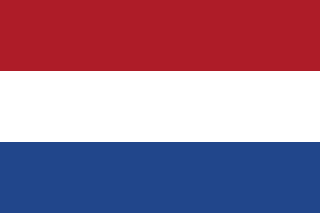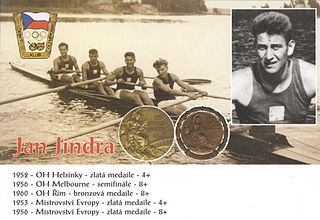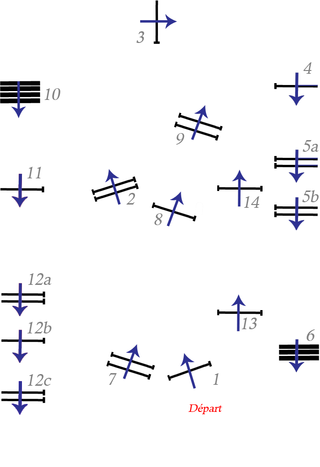
Venezuela competed at the 1952 Summer Olympics held in Helsinki, Finland. The Venezuelan Olympic Committee selected 38 competitors, 36 men and two women, to take part in 37 events across eight sports. This was a much greater turnout than 1948, Venezuela's only previous entry, which had only one athlete. For the first time, women represented Venezuela at the Summer Olympics. Women have been absent in the Venezuelan team on four occasions, including the next Summer Games held in Melbourne.

Venezuela competed at the 1956 Summer Olympics held in Melbourne, Australia, and in the equestrian events held in Stockholm, Sweden. Twenty-two competitors, all men, were selected by the Venezuelan Olympic Committee to take part in sixteen events across five sports. The delegation featured no female competitors, for the second time, and won no medals. While most of the Venezuelan athletes did not advance past the qualifying rounds of their sports, there were some good placings in the shooting, with Germán Briceño and Carlos Monteverde finishing in the top 10 of their events.

The Netherlands Antilles competed in the Summer Olympic Games for the first time at the 1952 Summer Olympics in Helsinki, Finland. The Caribbean nation, then a colonial territory of the Netherlands, was represented by their association football team.

The individual show jumping was an equestrian event held as part of the Equestrian at the 1964 Summer Olympics programme. The event was held on 24 October. There were 46 competitors from 17 nations. Each nation could have up to three riders. The event was won by Pierre Jonquères d'Oriola of France, the first rider to win two gold medals in individual jumping; he did so 12 years apart, with his first in 1952. It was France's third gold medal in the event overall, moving out of a tie with Italy at two for most all-time. Hermann Schridde, representing the United Team of Germany, took silver. Great Britain earned its second consecutive bronze in the event, this time with Peter Robeson taking the honors.

The men's 3 metre springboard, also reported as springboard diving, was one of four diving events on the Diving at the 1952 Summer Olympics programme.

The men's 10 metre platform, also reported as high diving, was one of four diving events on the Diving at the 1952 Summer Olympics programme.
The women's 3 metre springboard, also reported as springboard diving, was one of four diving events on the Diving at the 1952 Summer Olympics programme.
The women's 10 metre platform, also called high diving, was one of four diving events on the Diving at the 1952 Summer Olympics programme.

The men's individual road race at the 1952 Summer Olympics was held on 2 August, the 2nd last day of the Olympics on an 11,2 km course running counter-clockwise from Käpylä through Pakila and Maunula and back to Käpylä. The course was circled seventeen times, so the total length of the competition was 190,4 km. About half of the road was hard-surfaced, the other half sand-surfaced. There were 154 entries from 31 nations and 111 participants from 30 nations. Each nation could enter up to four cyclists; nations entering at least three cyclists had the scores of their best three finishers summed for the team road race event. The individual event was won by André Noyelle of Belgium, the nation's first victory in the men's individual road race. His teammate Robert Grondelaers took silver. Edi Ziegler earned Germany's first medal in the event since 1896 with his bronze.
The women's 200 metre breaststroke event, included in the swimming competition at the 1952 Summer Olympics, took place on 26–29 July, at the Helsinki Swimming Stadium. In this event, swimmers covered four lengths of the 50-metre (160 ft) Olympic-sized pool employing the breaststroke. It was the sixth appearance of the event, which first appeared at the 1924 Summer Olympics in Paris. A total of 33 competitors from 19 nations participated in the event.
The women's 200 metre breaststroke event, included in the swimming competition at the 1956 Summer Olympics, took place on November 29–30, at the Swimming and Diving Stadium. In this event, swimmers covered four lengths of the 50-metre (160 ft) Olympic-sized pool employing the breaststroke. It was the seventh appearance of the event, which first appeared at the 1924 Summer Olympics in Paris. A total of 14 competitors from 10 nations participated in the event. This was a decrease from the 1952 Summer Olympics, because the breaststroke event was split into the 200m orthodox breaststroke and the 100m butterfly event.

The individual show jumping in equestrian at the 1948 Summer Olympics in London was held at the Wembley Stadium on 14 August. The competition consisted of a single round of jumping. In the case of a tie in points, a jump-off was arranged. The jump-off had no time limit, however, the time taken to complete the jump-off was used as a tie-breaker. The points from the individual competition were also used in the team competition. There were 44 competitors from 15 nations, with nations able to send up to three riders each. The event was won by Humberto Mariles of Mexico, with his teammate Rubén Uriza taking silver at the top of a three-way jump-off for second place. Mariles' win was Mexico's first victory in the event. Jean-François d'Orgeix of France earned that nation's first individual jumping medal since 1928 with his bronze.
The team jumping in equestrian at the 1948 Olympic Games in London was held at the Empire Stadium on 14 August. The competition consisted of a single round of jumping. In the case of a tie in points, a jump-off was arranged. The jump-off had no time limit, however, the time taken to complete the jump-off was used as a tie-breaker. The points from the individual competition were also used in the team competition.

The men's coxed four competition at the 1952 Summer Olympics took place at Mei Bay, Helsinki, Finland. It was held from 20 to 23 August and was won by the team from Czechoslovakia. There were 17 boats from 17 nations, with each nation limited to a single boat in the event. The gold medal was Czechoslovakia's first medal in the men's coxed four. Switzerland earned its third consecutive silver medal, and sixth medal in seven Games dating back to 1920. The reigning champion United States took bronze.

The individual eventing in equestrian at the 1956 Olympic Games in Helsinki was held from 30 July to 2 August. Only 34 of the 59 starters were able to finish the competition, with 20 being disqualified in the cross-country, 3 more retiring during that phase, and 2 being disqualified in the jumping.

The team eventing in equestrian at the 1952 Olympic Games in Helsinki was held from 30 July to 2 August. Only 33 of the 57 starters were able to finish the competition, with 19 being disqualified in the cross-country, 3 more retiring during that phase, and 2 being disqualified in the jumping. This left only 6 of the 19 teams with all three riders finishing.

The individual show jumping or "Prix des Nations" at the 1952 Summer Olympics took place on 3 August, at the Helsinki Olympic Stadium. It was the ninth appearance of the event. For the first time, the event featured two rounds. There were 51 competitors from 20 nations, with each nation able to send a team of up to three riders with the results shared between team and individual events. The event was won by Pierre Jonquères d'Oriola of France, the nation's first victory in individual jumping since 1912 and second overall. Óscar Cristi of Chile took silver for that nation's first medal in the event. German rider Fritz Thiedemann earned bronze.
At the 1952 Summer Olympics in Helsinki, the men's individual modern pentathlon event was contested. It was the eighth appearance of the event, which had been featured at every Summer Olympics since 1912. The individual scores were also used for the men's team event.

The individual show jumping at the 1956 Summer Olympics took place on 17 June, at the Stockholm Olympic Stadium. The event was open to men and women, with two women competing. It was the 10th appearance of the event. There were 66 competitors from 24 nations, with each nation able to send a team of up to three riders and the team and individual events sharing results. The event was won by Hans Günter Winkler of the United Team of Germany, a victory in the debut for that nation though Germany had won in 1936. Brothers Raimondo D'Inzeo and Piero D'Inzeo took silver and bronze, respectively, the first medals for Italy in individual jumping since 1924.
The individual jumping at the 1956 Summer Olympics took place on 17 June, at the Stockholm Olympic Stadium. The event was open to men and women. It was the 10th appearance of the event.














